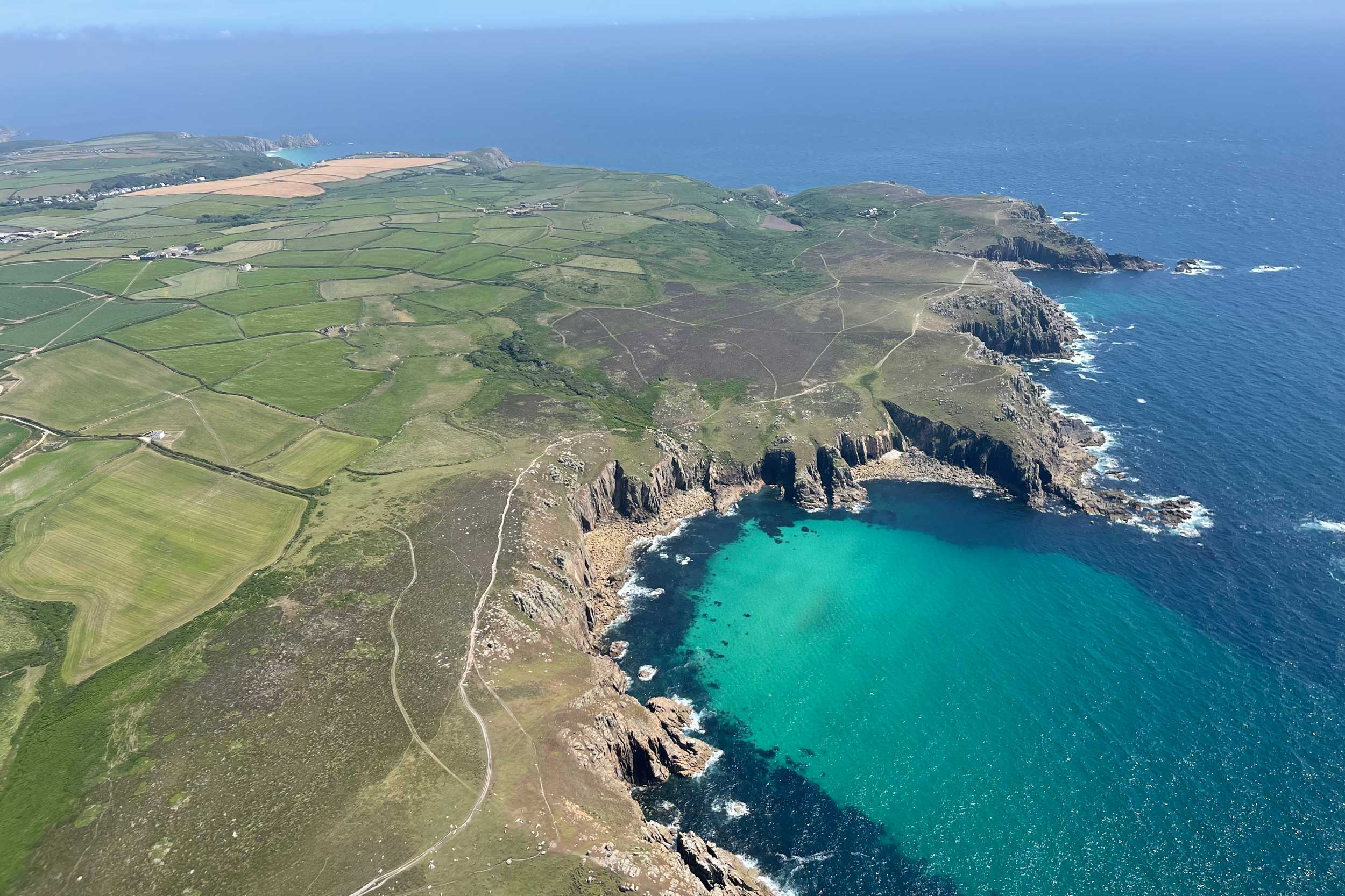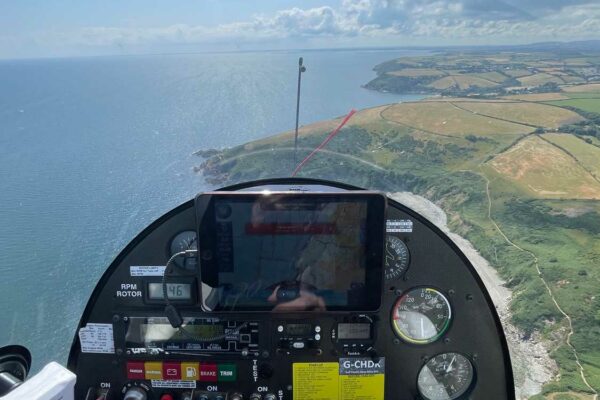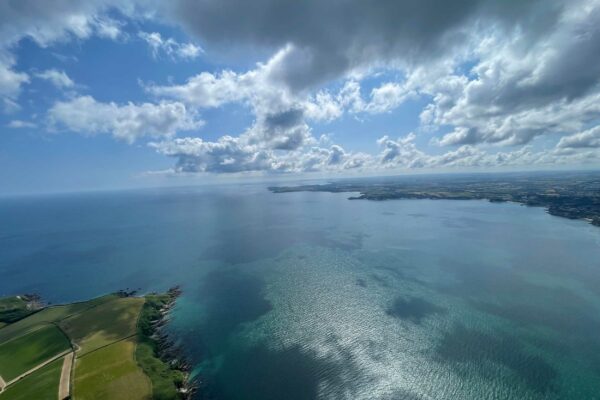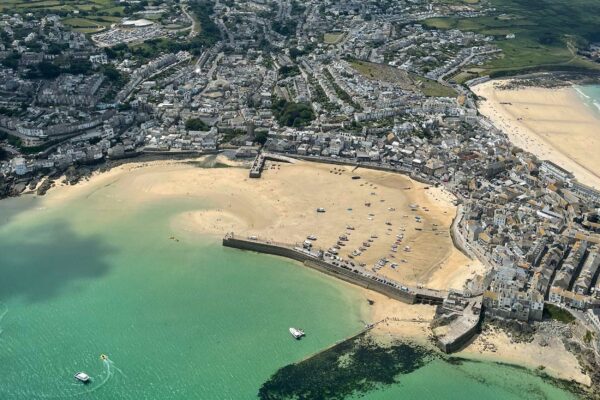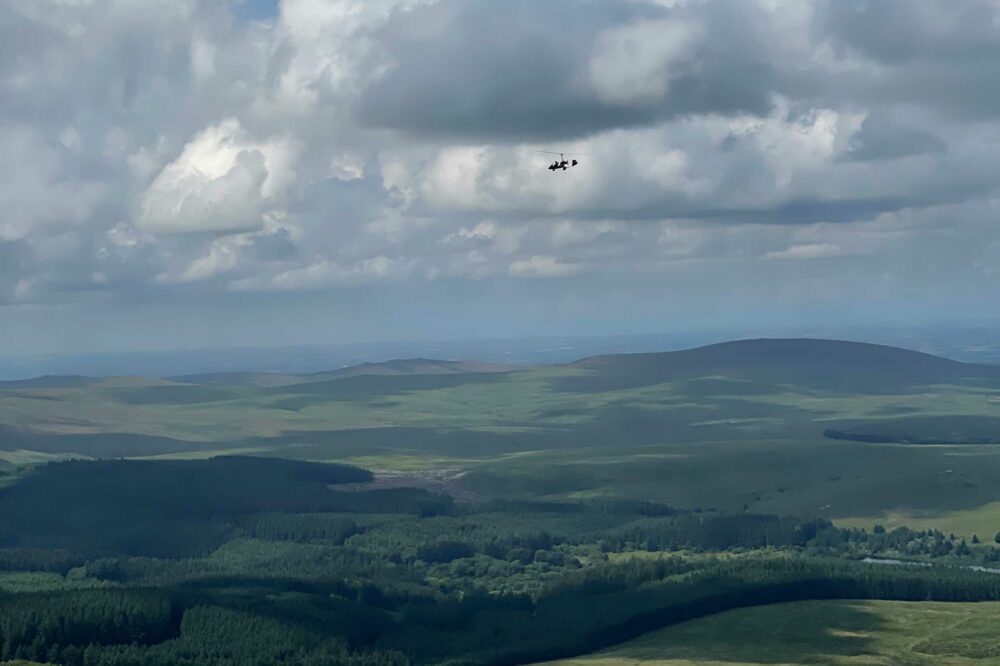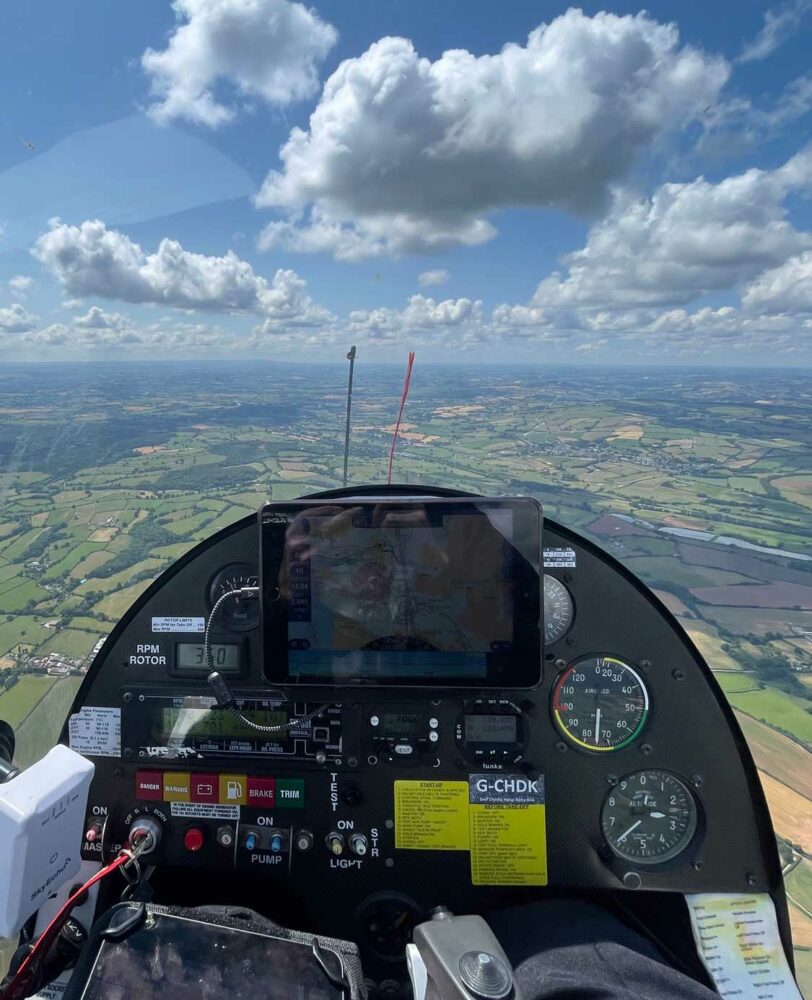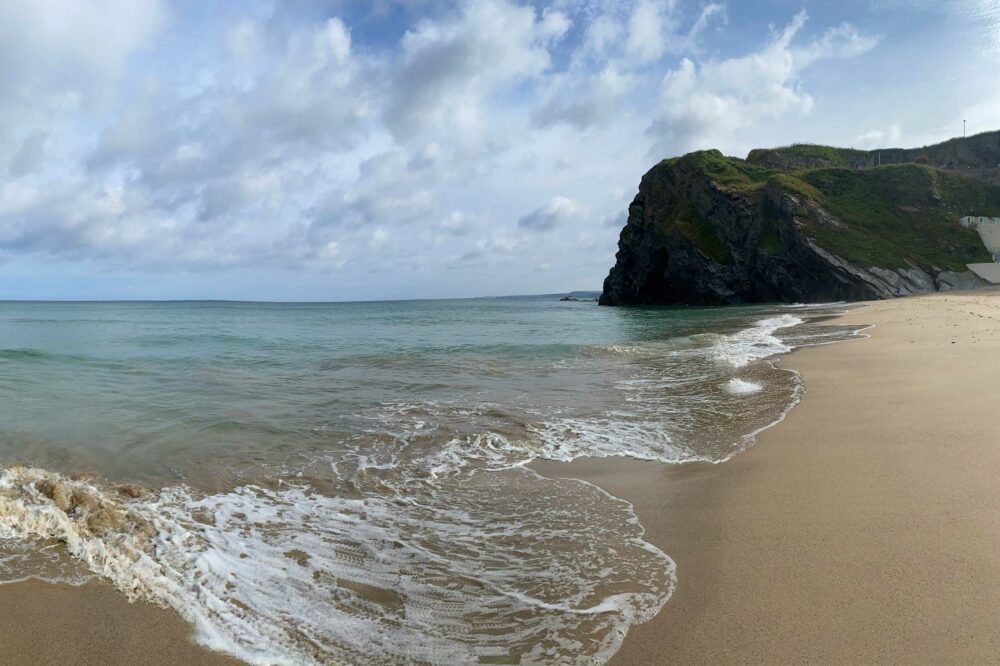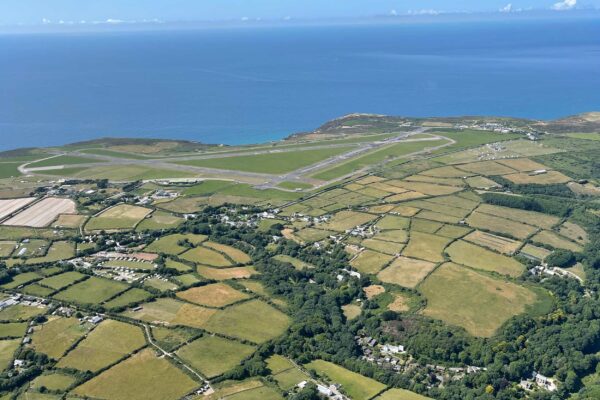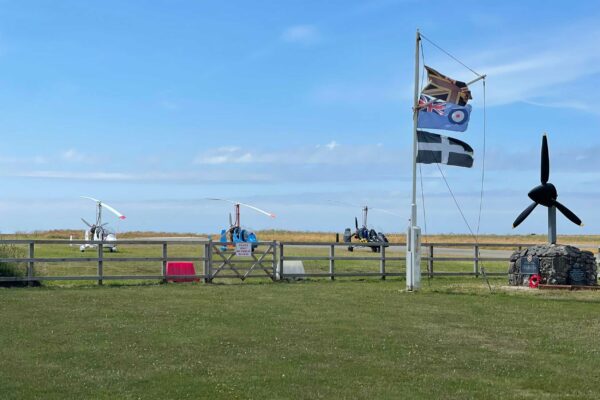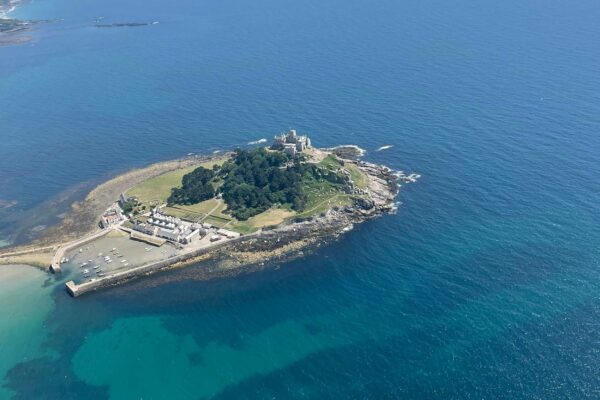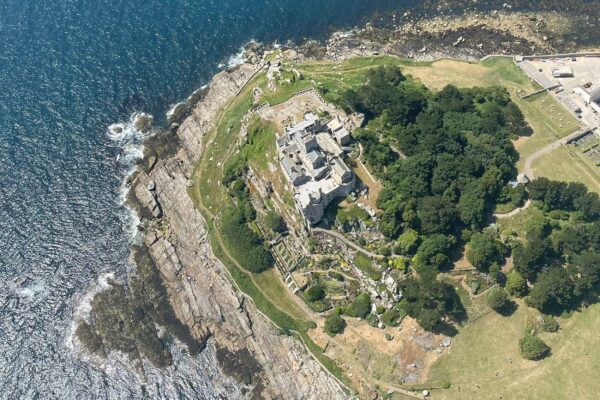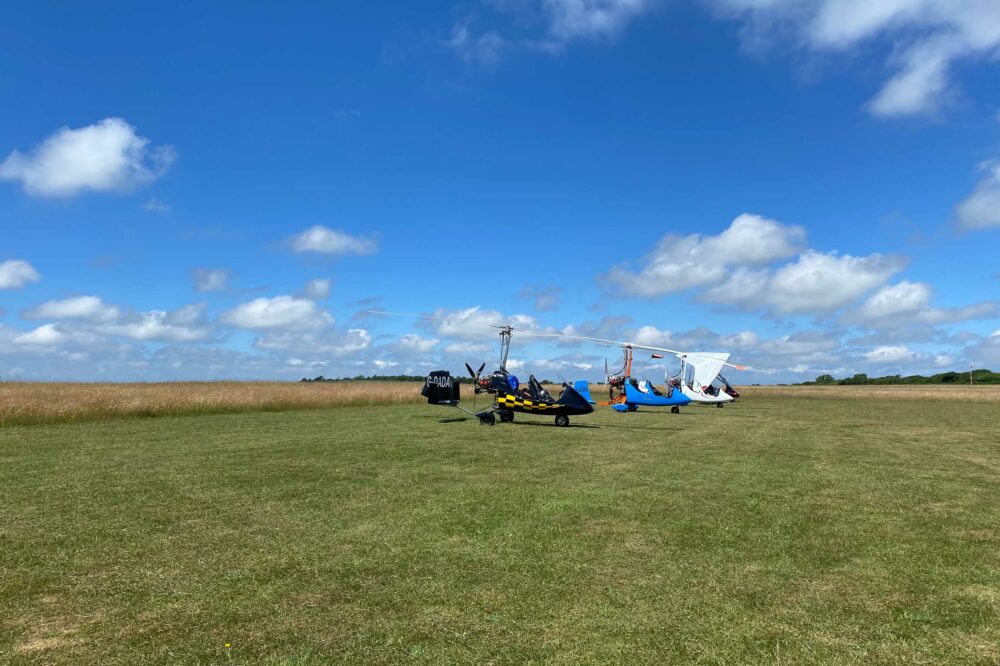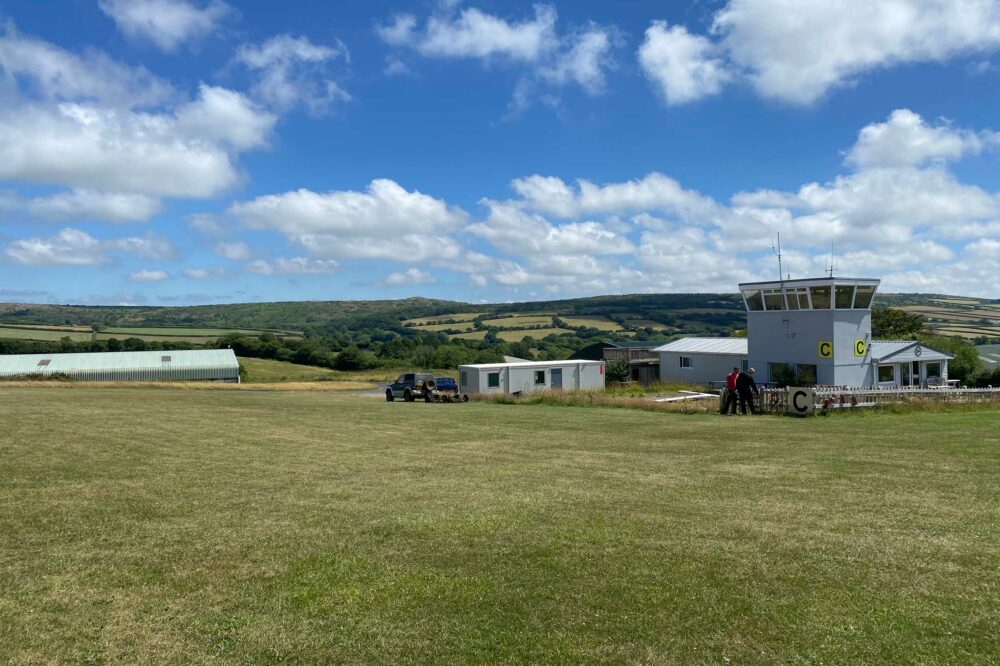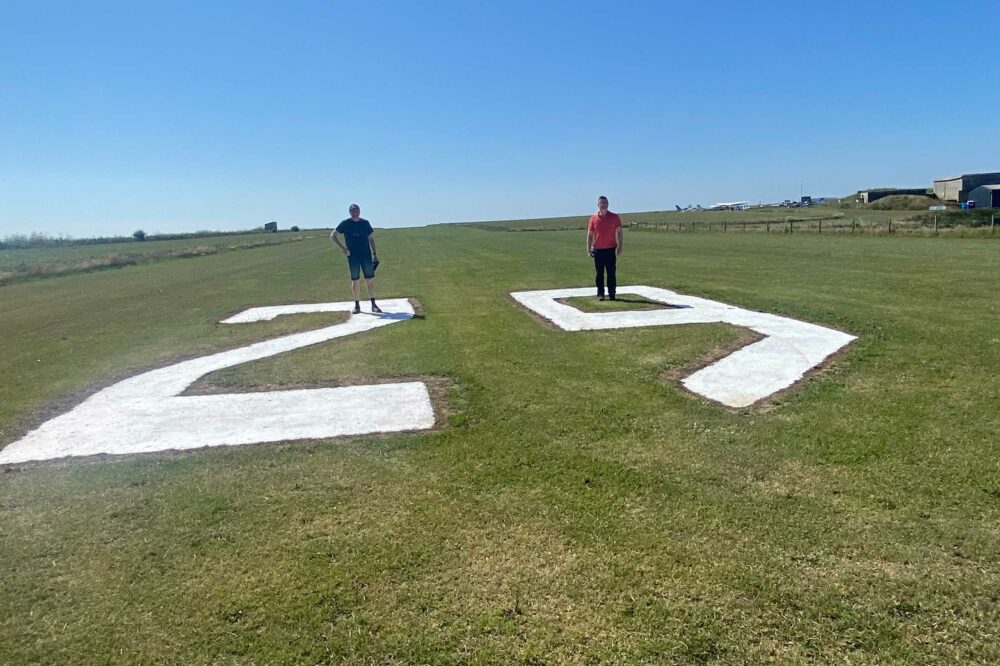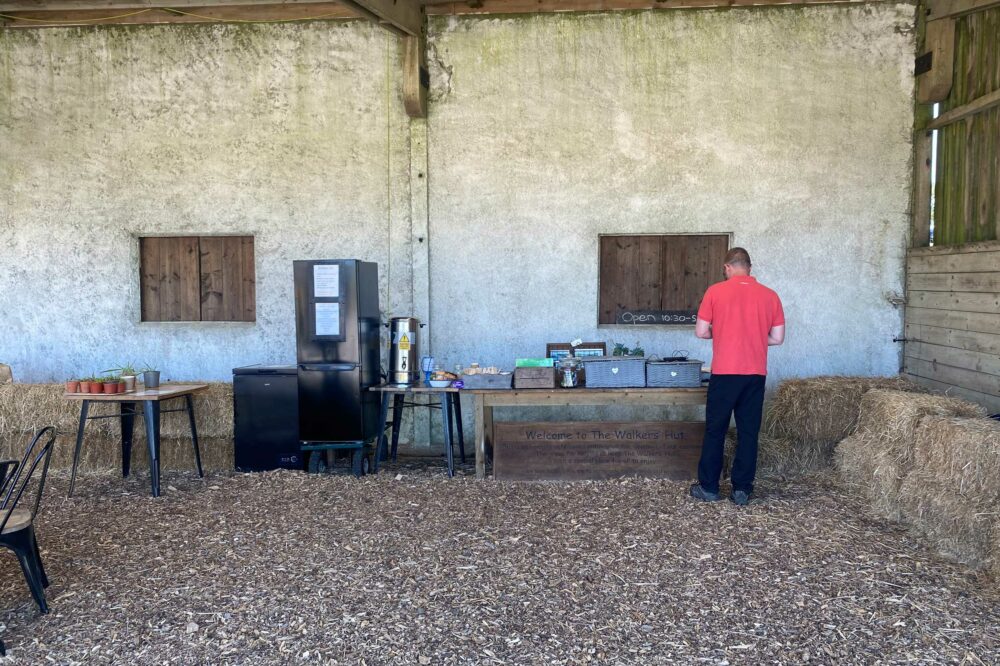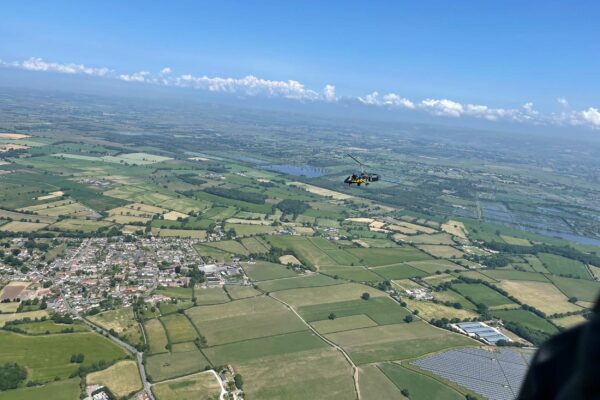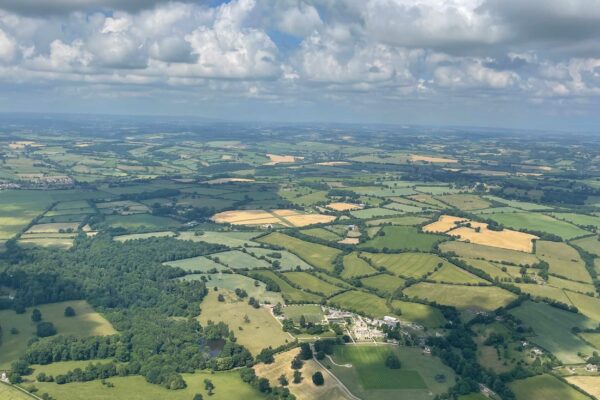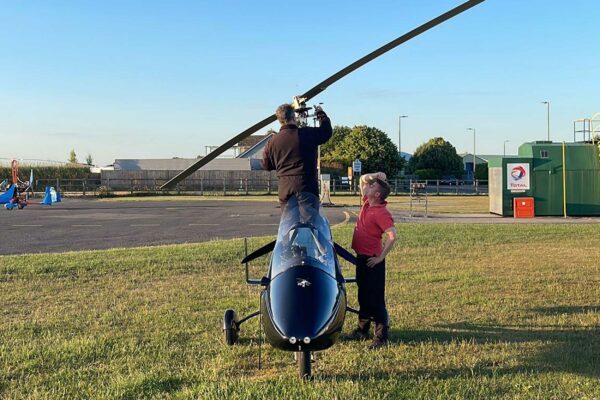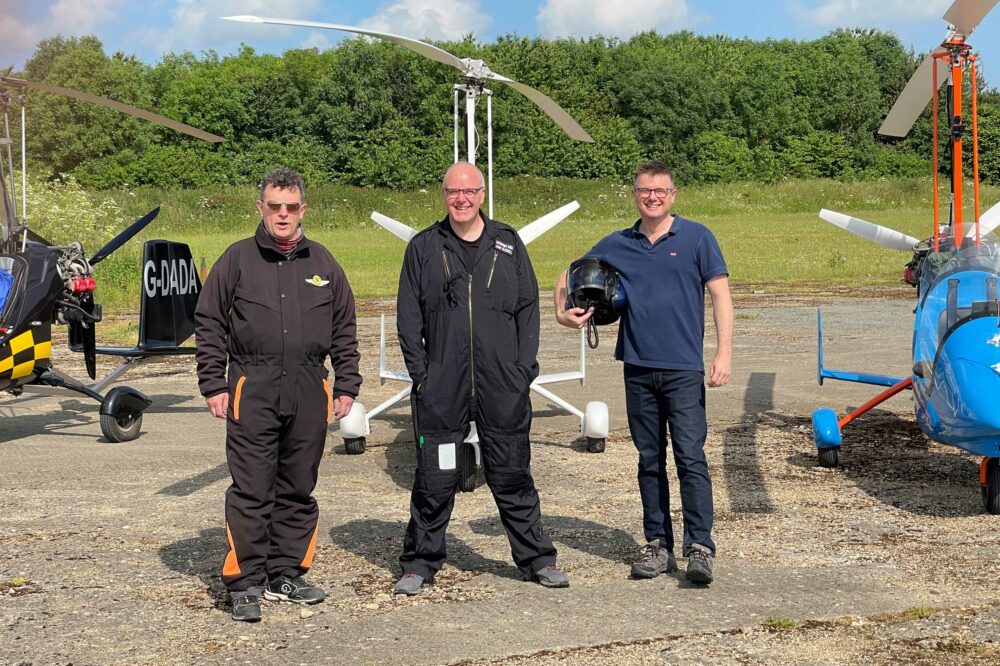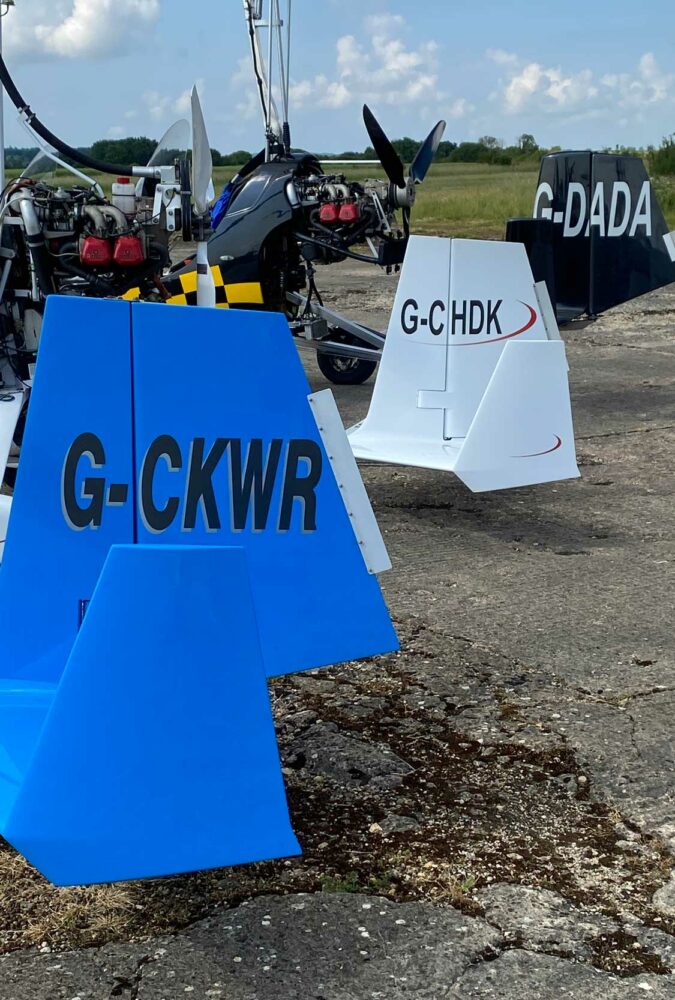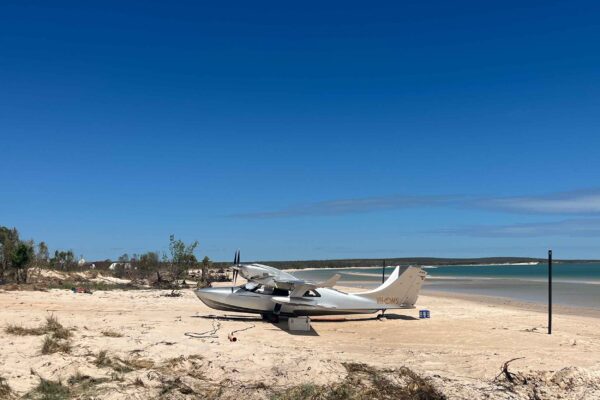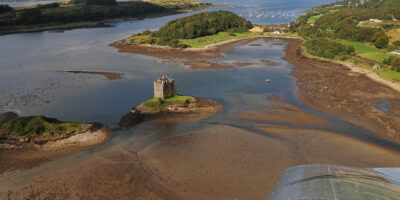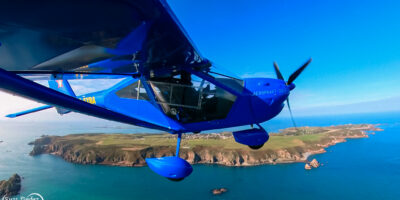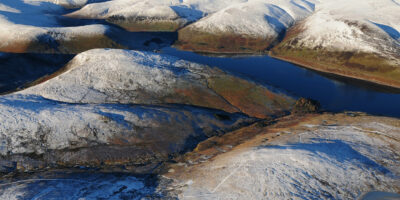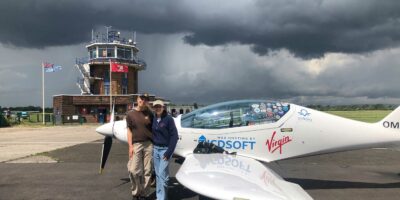Our next stop was Bolt Head, just by Salcombe, an immaculate grass strip also on a clifftop, with the circuit out over the sea, which had been highly recommended to us by Andy Jones, the gyro instructor at Enstone.
We had assumed that Runway 29 would be in use but an aircraft landing just ahead of us said that the wind favoured 11, so we made a straight in approach over Bigbury Bay. What a stunning place!
There were few facilities at the airfield, but we walked about 10 minutes to a barn at a yoga retreat where you could help yourself to teas, coffees and a selection of homemade scones and cakes, with an honesty box. A couple in a Luscombe were walking down to the beach for a swim, our friend in the GY-20 was the next to land and we even met the owner of a TB20, which had previously been based at Enstone.
However, another of the landing pilots informed us that there was a long bank of low cloud all the way along the coast from Exeter to Bournemouth and so it seemed unlikely that we would make it to Henstridge, our next destination.
Coasting east after departure it became apparent that the advice had been correct and we made the decision to divert to Dunkeswell, routing to the west of Exeter. All good, at least until a warning light appeared on DK’s panel and John made the decision to declare a Pan and divert to the nearest airfield, which turned out to be Halwell.
Paul and I remembered the maxim ‘never leave a man behind’ – and then promptly ignored it, continuing on to Dunkeswell since their fuel would be closing shortly and we’d be stuck for the evening. And, anyway, we wanted to see the Red Arrows that were due to pass by the airfield!
Exeter Approach later informed Dunkeswell that DK had landed safely, which they related to Paul and me as we called inbound, which was a welcome relief. John had even unwittingly become a bit of a celebrity with 12,500 people on Flightradar following his 7700 squawk!


